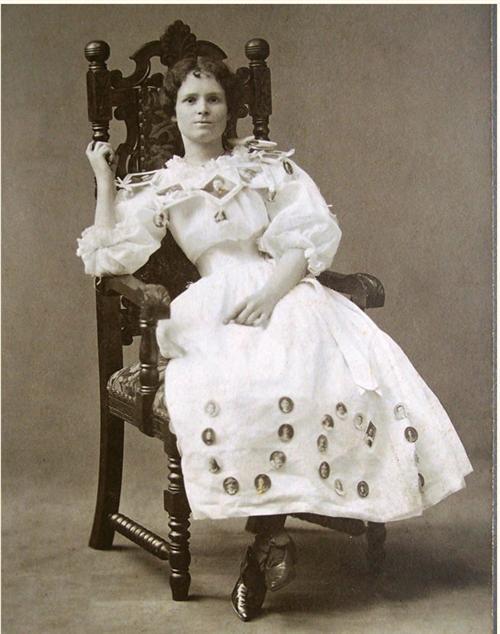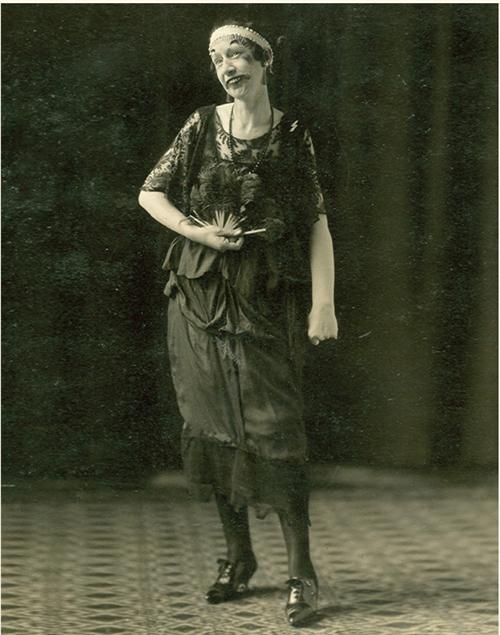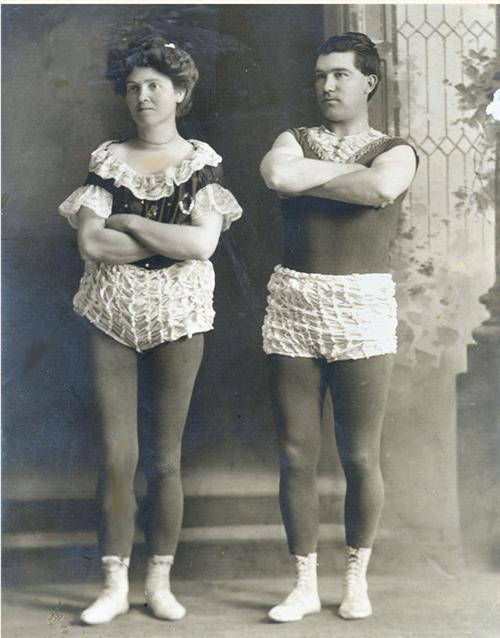Sign up for the Family Tree Newsletter Plus, you’ll receive our 10 Essential Genealogy Research Forms PDF as a special thank you!
Get Your Free Genealogy Forms
"*" indicates required fields
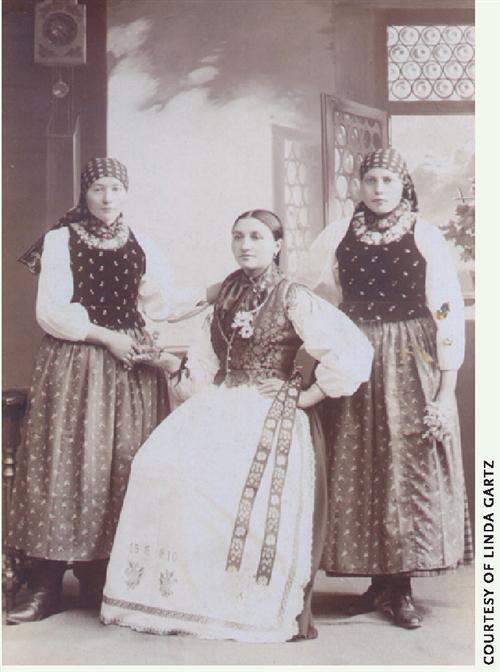
Photographic Memory
My two brothers and I recently made a pilgrimage to Romania to the hometowns of my Transylvania Saxon paternal grandparents. My grandfather hailed from the little town of Neppendorf (near Sibiu — Hermannstadt German), where we visited the church he attended, After we marveled at the beauty of the 14th-century building, the church secretary guided us to the second floor, to a small history museum of life in this German enclave.
More than a century’s worth of books, furniture, musical instruments and needlework just like a the pieces my grandmother had sewn were on display. Photographs of weddings, families and the local ethnic Germans at work lined the walls. As we studied the photos, my brother and I were jolted into recognition. “Look!” he said. “I think this is Grandpa’s sister and her husband.” sure enough, it was Katarina Gartz and Josef Huber on their wedding day in the early 20th century.
Bill called me over to the adjoining wall. “Isn’t this Grandma?” he asked, pointing to a photo from May 15, 1911. I knew he was right because the same picture was in our family collection. It shows her at 24, hair drawn back from a center part. Her left hand is placed proudly on her hip as she looks confidently into the distance, flanked by two meeker-looking women. All are dressed in traditional folk grab.
We found copies of three such family photos in the museum. What a surprise and thrill to travel 5,000 miles to discover our ancestors’ photos representing the Germans in Romania in a museum we didn’t even know existed.
Linda Gartz
Evaston, Ill.
Keep ‘Em Guessing
Before my great-aunt Pauline (Perel) Green died in 1998 at age 89, she recorded memories of her family’s life after they arrived in the United States from Ukraine around the turn of the century.
I have to say I never expected to hear a funny story about my great-grandmother Devorah Garter. Sometimes, Devorah babysat my mother. My mother remembers having to sit at her bubba’s table, with no book or other amusement, for hours. Then when my her mother came to pick her up, my great-grandmother would say, “Why does this child always sigh so?”
Nevertheless, my great-aunt Pauline told this story about that same woman: “One day my mother dressed up in her husband’s clothes-the black suit, a black hat, she put on a false beard. Then she went out to her son’s apartment and knocked on the door. Abe came down, saw her, and yelled, ‘I don’t know this man. Throw him out!’”
Cora Schenberg
via e-mail
Something to Write Home About
Back in the early 1960s, when I was beginning to research my ancestry (and before I’d heard of a computer or even had my own typewriter), I sent handwritten letters, pedigree charts and family group sheets to all my oldest relatives whose addresses I could glean from my parents and grand-parents. Several months later, I received a letter from a woman in Missouri to whom one of my relatives had forwarded my requests, knowing this woman had information about one of my lines.
The lady from Missouri told me she recognized my handwriting because it was so similar to that of my great-grandmother — she had several letters my great grandmother had written, She sent me one of the letters and a swatch of fabric from my ancestor’s wedding gown.
Say It With Flowers
In 2001, my husband and I went on a tour of Sicily. He encouraged me to visit Messina, where my mother’s father was from.
We arranged to go to the municipal cemetery. From my grandfather’s stories, I knew his parents, Salvadore and Eugenia Vadala, were alive during World War I. He’d returned to Italy to serve in the army there, and his wife went to Messina with my mother and her siblings.
After checking several of the cemetery’s books from the early 1920s, I found my great-grandfather’s name. The record also included his father’s name. An attendant took us to where Salvadore and Eugenia were buried, and I knew immediately we were in the right place from the picture on the tomb.
That was May. I came home from work one day in November and my husband said, “You’ll never guess what you got in the mail today.” It was a letter from my cousin who put flowers on the grave for All Soul’s Day. She’d found my note. We started e-mailing each other, and in 2005, we visited her in Sicily.
Madeleine Conway
Newport News, Va.
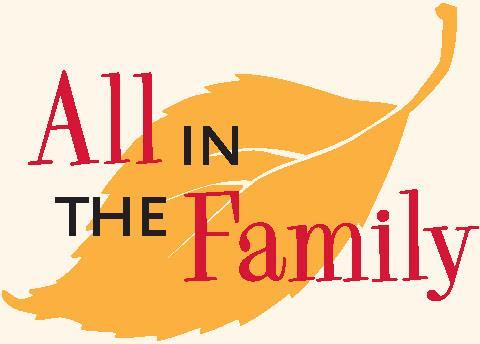
Moveover, Paris and Britney: Your sartorial sins don’t compare to the curiosities we saw after asking readers for photos of their oddly attired relatives. The descendants who turned in these folks to the fashion police will receive the Family Tree Resource Book for Genealogists edited by Erin Nevius and Sharon DeBartolo Carmack (Family Tree Books).
Maybe this unknown lady was showing a passion for family history. Cad Thomas of Santa Barbara, Calif., considers her photo-decorated dress unusual and creative, rather than an example of what not to wear.
Oconta Falls, Wis., resident Connie Jacobs describes Anna Frances (Morrison) Osborne (born in 1883) as “quite a character” who had a tea-reading parlor, traveled with musicians and played piano in the local theater.
Barbara Cornia of Casper, Wyo., doesn’t know these people’s names, but she’s found pictures of similarly clad circus performers. We suppose dignity is the least of your concerns when you’re perched on a tightrope.
From the March 2008 issue of Family Tree Magazine.
ADVERTISEMENT

